The following Articles and Images have been added to the database
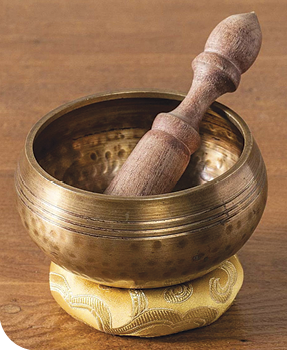

Organizers are excited to announce a fun and safe event in support of Child Haven International this fall. This year’s event takes place on Sunday, September 27 from 3–5pm at the Carleton Place Market Square, an outdoor covered space. All proceeds go to support destitute women and children in India, Nepal, Tibet and Bangladesh.
You will have the opportunity to attend this outdoor market-style event and enjoy Indian music and culture, shop the international sales bazaar, get henna body art, and learn more about this amazing organization. In addition, Shafali East Indian Restaurant is providing a delicious take-home Indian meal for you to enjoy that evening.
Market Masala is the 5th annual fundraising event in Carleton Place. As in past years, there will be sales tables featuring an amazing array of handcrafted goods and beautiful unique items from India, Nepal, Tibet and Bangladesh. All sales items were selected by Bonnie Cappuccino during her trips to Child Haven homes.
The ever-popular henna artists will also be back, applying their ornate and beautiful personal henna designs (following public health guidelines of course!).
This event raises funds for Child Haven International, which operates nine homes for over 1,250 children and women. Child Haven raises all its funds from individual donors throughout Canada and around the world. Fundraisers such as Market Masala go a long way to helping the charity meet its needs.
Founded in 1985 by Bonnie and Fred Cappuccino in Maxville, Ontario, Child Haven homes are unique in that they operate according to the philosophy and principles of Mahatma Gandhi. These include no recognition of caste, and the promotion of gender equality, non-violence, respect for all cultures and religious backgrounds, and simple living.
A remarkable couple, Bonnie and Fred have been awarded the Order of Canada for their inspiring and ongoing charitable work. They bring a message of hope, and amazing stories about the children to whom they’ve provided a nurturing home and education, who go on to lead successful independent lives.
During the pandemic, fundraising has been extremely challenging. The virus has been especially hard on marginalized communities everywhere. It is anticipated that as a result of the pandemic it will be necessary to take in more children at the Child Haven homes. Your support now is more important than ever!
Tickets for the take-home dinner are $20 and can be purchased on-site or in advance from <www.childhaven.ca> or from Jane Hamilton at <janehamilton@live.ca>. Shafali Indian Restaurant has been very supportive — 100% of ticket sales go to Child Haven. It’s a good idea to order in advance, to ensure that you get one of these fabulous meals!
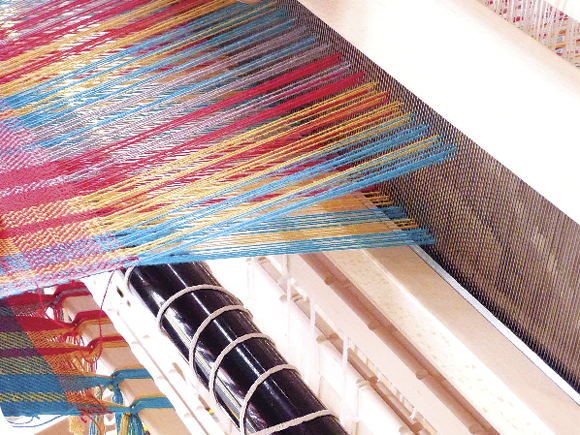
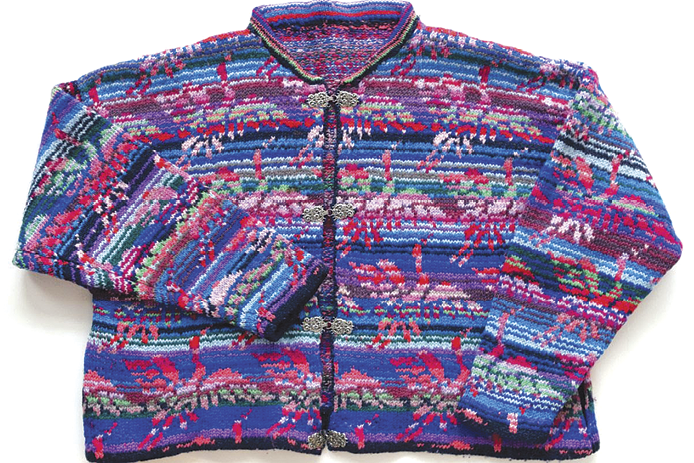
Fibrefest is once again taking over Almonte from September 11–13 (with workshops beginning on the 10th). Celebrating its 25th anniversary, the festival will look a little different in 2020 as it moves online to comply with public health advice and regulations, but the Mississippi Valley Textile Museum (MVTM) is excited to welcome you for our fourth year of hands-on workshops… albeit this time virtually. This is a unique opportunity to involve friends and family from further afield who may not be able to join us in person — perhaps you would like to sign up together and share the experience!
This is your chance to bring the rich history of our area into your own home and extend your skills under the guidance of talented fibre artists and vendors. Workshops are intended for adults, and once again we have a terrific variety on offer; some using traditional materials and techniques that have come to us through centuries of craftsmanship, and others that are not-so-traditional and right up to date! In every case, joining one of our Fibrefest workshops enables you to celebrate the colours, textures and diverse crafts that create beauty from natural fibres.
Check out two of our featured workshops below, or explore <almontefibrefest.ca> for more information about Fibrefest 2020 and the activities hosted by Mississippi Valley Textile Museum in September and beyond. All your favourite Fibrefest vendors are online too, in our virtual marketplace, together with some new faces. Whether this is your first year at Fibrefest or your 25th, we look forward to seeing you “there”!
Featured Workshops
Interested in taking your knitting to the next level of colour and creativity? Kirk Dunn of the Knitting Pilgrim will teach a course called Kirk’s Creative Colour on the use of multiple yarns in knitting to achieve a tremendous range of depth and colour. Participants must be able to knit and purl to get the most out of this class. You will practice mixing yarns while using intarsia techniques, working with multiple strands of yarn and combining colours on the fly to create complexity and texture. The workshop will use pieces from your whole stash of yarn, building your skill and confidence in bringing colours together by working on a pin-cushion design (chosen from three supplied by Kirk as part of your workshop fee).
To see more of Kirk’s work, visit <kirkdunn.com>. And to sign up for his class, visit <almontefibrefest.ca/workshops>. But hurry — space is limited!
Talented rug hooking artist Robin Whitford is offering a course called Fanciful Feathers Rug Hooking for creators already familiar with the rudiments of hooking who are looking to add some more fanciful elements to their designs. Each participant will design their own original feather and explore how to hook with a variety of materials and yarns, some of which may be new to them. Expand your repertoire under Robin’s guidance using a mix of fun yarns and stretchy fabric strips supplied in advance as part of the workshop price (for example, your kit might include eyelash yarn, chenille, stretch velvet, sari silk, t-shirt yarn, etc.).
Check out Robin’s work at @hookingoutsidethelines on Facebook and Instagram, and visit <almontefibrefest.ca/workshops> to sign up.
Featured Vendors
Joining us online all the way from Nova Scotia is Miss Hickory Handmade, featuring, “a collection of handmade items; woven rugs, ponchos, scarves, placemats and tea towels. Hand knit items include cardigans, shawls, scarves and hats. Always something new, all natural fibres, many from recycled/repurposed material, many from luxury yarns.” So many beautiful things!
And you can find all-natural products (no plastic allowed!) at Hampshire Hill. They describe their work as combining “my long-time labour of love, weaving, with an environmental initiative. The fibre content of all my products is 100% natural, consisting of cotton, wool, or alpaca. Every natural fibre has its own unique advantages. Cotton can be machine washed and dried. Wool will stay warm even if its soaking wet, and alpaca is softer and warmer than wool.”
These and so many other fabulous vendors and workshops will be coming to you starting September 10 at <almontefibrefest.ca>

When I first began supporting Willow’s, a struggling Vanier drop-in centre for sex trade workers, I wanted to help others who needed a hand. I had no clue this would lead me to a series of crash courses on Canadian law, community safety, human rights, and harm reduction strategies for the most vulnerable of our citizens. I also learned the distinction between sex work (voluntary) and trafficking (forced), both of which are happening in all corners of Lanark County. This is not a big city problem. It concerns us all.
Jennifer, a Willow’s volunteer, became a dancer in a strip club at 14 — a runaway from a home of violence and drugs. For 15 years, she says, “I made tons of money. Men would buy me anything.” Cocaine was plentiful too. At 29 and considered too old for exotic dancing, Jennifer could not make ends meet, so the only recourse was to sell sex. “I made $40 a blow job and $100 for full sex,” she says, “and I thanked God for the work.” In 2013 she nearly died from an attack. The man was jailed. “I was lucky,” she says. “I had a witness — but many women don’t.”
Willow’s co-facilitator, Kristen Gilchrist-Salles, says that clearly the centre is a band-aid solution for a festering wound, “but it’s all these women have got.” Since 2019, Willow’s has provided the most basic of needs to sex trade workers, many of whom are homeless and addicted. Many come from small Ottawa Valley towns.
Erin Lee, Executive Director of Lanark County Interval House, confirms this. The Carleton Place shelter regularly supports sex workers from every corner of the county. Some have chosen the trade, others have been forced into it as a last resort. “All are treated here as equals and with respect,” Lee says. “We plan how best to keep them safe.”
Before COVID-19, Willow’s offered nursing care, free clothing, toiletries, crises intervention, phone and internet access, bus passes, a message board, safe injection gear, condoms, and a hot meal once a week. Also washrooms — which loom high on the priority list for disadvantaged folks. Shelters can be chaotic, “where what little they have is stolen,” says Gilchrist-Salles. In summer, some women sleep in fields or hallways. Often, “five or six of them share a motel room until they are kicked out”. Some carry their possessions in a backpack, and have no cash for a laundromat or toothbrush, let alone a meal.
At Willow’s, “there are no strings attached,” says Gilchrist-Salles. “They are loved unconditionally here, and they are safe. They are not expected to change, and can talk openly about what is going on in their lives. We meet them where they are and do everything we can to support them.”
COVID’s arrival forced Willow’s to close temporarily. Gilchrist-Salles does what she can to meet with clients to hand them toiletries, gift cards or bus passes. But many of the women have vanished in their exhausting search for a safe place and something to eat. “I feel so guilty about not being there for them — I miss them a lot and worry about them.”
Canadian sex workers face perilous conditions where muddled laws state that selling sex is legal, but buying it or advertising it are not. Gilchrist-Salles explains: “they have two seconds to assess whether it’s safe to get in a car or go behind a dumpster with a stranger.”
According to POWER (Prostitutes of Ottawa-Gatineau Work, Educate, Resist), when sex work is criminalized, “the industry is driven underground where workers have little control.” They are prohibited from creating safe environments, working with others who could screen clients, “or even negotiating services they will provide.” The result is “vulnerability to violence, abuse, stigma and other harms,” or horrors like the Robert Picton case.
POWER says decriminalization “is the best way to ensure the health and safety of sex workers and communities overall.” In New Zealand, where sex work was legalized in 2003, rather than fearing the justice system, workers can call on it if necessary. They can receive customers in secure locations, can oblige clients to use condoms, and can “draw on labour law to negotiate working conditions.”
Willow’s intends to reopen this fall with restrictions, says Gilchrist-Salles. For one, “Food will probably be ‘to go’, rather than sharing a hot meal together,” and participants will be limited.
Meanwhile, donations are desperately needed for groups such as Willow’s, POWER and Lanark County Interval House. (POWER strives to repeal government legislation that criminalizes sex work, as well as educate the public.)
E-transfers can be sent to Willow’s <familiesofsistersinspirit@gmail.com>; Lanark County Interval House <jennifer.greaves@lcih.com> or POWER <powerottawa@gmail.com>.

Ah, the back to school season is upon us! The joy of shopping for school supplies, that fresh new outfit and shiny new shoes. The little rush that parents get when they think about sending their kids back to full day daycare — I mean, full day learning — so we can make up the hours lost over summer and try to keep our jobs. Oh wait, this is 2020? Damn!
Wait — are you sending your kids back? Yeah, me too. Well, I think so. I might just wait to find out what the school has to say. You know, if the ventilation is okay and if they’ve had time to make the infrastructure changes required. And maybe I’ll find out who her teacher is and make sure they’ve had some time to figure out how to manage student safety in this new reality and see if they’re coping okay. It might be good to hear how many kids are going to be in the class, too. I don’t think she can take the bus and there’s no before- or after-care available, so I guess I can drop her and make it to the office by 10am… and then if I leave by 2pm I should be there in time for pickup? Hmm… a solid four hours. I guess they’re usually asleep by 9, so I should only have to work until midnight to finish up. I guess that could work. Wait — this is already September? Do they start on the 4th? Oh dear…
Right. Okay. Maybe we could try a homeschool bubble. Just for now. I’ll take the kids on Monday, you take them Tuesday and we’ll find some stranger to take them on Wednesday. Deal? It’s only going to be nine kids. Ten tops. You can do that, right? Yeah me too — I have totally looked after that many kids before. I think at a birthday party once. Just don’t look at my CV.
Okay, this isn’t forever. She can go back to school once we know she’ll be fine. I think they said the first re-entry is November? Or February? Does she get activities from her teacher still, or only if we agree that she sits at a screen for four hours? I thought they said that much screen time is detrimental to kids’ brains at an early age? I mean she’s almost six, maybe that’s fine. I’ll just bribe her with bags of candy. I’m sure that will help?
What do I do??!! What are you doing?! No idea? Me either. But I made this trusty cootie-catcher to help us decide… Oh, I guess that’s not an easy format to share in print. Okay, here’s one of those old cosmopolitan decision quizzes. This will definitely help us decide — it’s super scientific!
And by the way, if you’re caring for kids right now — you’re a rock star. If you decide to send them to school, that is the right decision. Just ask Dairy Distillery for a sanitizer discount code. If you do distance learning, lord give you patience, but that is the right decision. And if you can pull off a homeschool, well then that is the right decision, too. In the wise words that my two-year-old forced me to read over and over tonight: “we can’t go over it, we can’t go under it, we have to go through it.” Pandemic parenting is not for the faint of heart. Be safe and be well.
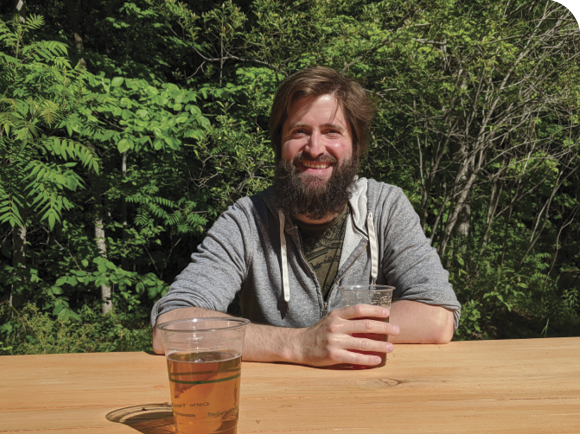
theHumm is reaching out to members of our Ottawa Valley community to ask how they are finding ways to use their gifts and skills in these challenging times. Today’s subject is Daniel Post, an Almonte-based web developer who recently created and launched <CraftOttawa.ca> — an online guide to the region’s craft liquor scene. We contacted him to find out what inspired him to do so, and what he thinks of the area’s spirited offerings.
theHumm: First of all, I understand that you and your wife are relatively new to this area. Where are you from, and what drew you here?
My wife and I are both original Ontarians — Taucha’s from Kitchener-Waterloo and I’m from Ottawa — but we moved to this area after living in Vancouver for a decade. After we got married (in a microbrewery!) we wanted to move closer to family. We were living with my parents in Ottawa while we looked for an apartment and a friend suggested we check out Almonte. We started at Luna Handpies & Café (then called Gaslight Café). We could immediately feel a sense of community and local pride from the customers who walked through the door. We drank our coffees, looked around, and promptly fell in love with Almonte.
What was it about this area’s craft liquor scene that inspired you to devote your time and talent to promoting it? Are there any hidden gems you particularly want to draw attention to?
Taucha and I were very involved in BC’s craft beer scene. We toured breweries, went to award ceremonies and festivals, got to know the brewers, and showed it all off when family visited. I built a simple Google Map to try to keep track of where we’d been, but we wished there was one site where we could find all the crafters, events and festivals. I became a web developer, and when we moved to this area I was determined to build that site here. It became clear as I worked that this area has something special worth drawing attention to.
We haven’t had the chance to explore as much as we’d like, but we’re slowly working through the list and covering it all on Instagram. Our local favourites are: Cartwright Springs in Pakenham (a natural paradise) <csbeer.ca>, KIN Vineyards in Carp (a slice of the Okanagan in our backyard) <kinvineyards.com>, and Ugly Apple Cider and Wines in Lanark (it may be true that ugly apples make the best cider!) <uglyapple.ca>.
In your opinion, how do beer, wine and spirits fit under the “food tourism” umbrella, and why is it important to market them collectively?
Today it feels like there’s something to try wherever you go, but 75% of the crafters on the map were established in just the last seven years. I think we’re seeing that boom in part because local makers understand that offering different options for different tastes is good business. It’s important to market them collectively and celebrate choice for the same reason. Finding a great craft cider means there’s probably a beer, wine, or cocktail out there for you that’s been made with the same passion and imagination.
If people want to suggest new craft breweries, vineyards or distilleries for you to list on your website, how should they go about it?
Don’t forget cideries and meaderies! Emailing <contact@craftottawa.ca> is the most direct way to reach me, though I’m also active on all my social media channels. I love hearing suggestions; just when I think I’ve found them all, someone knows one that slipped through the cracks. And I would love to hear if there is a region I should cover in a future site. Prince Edward County is very much on my radar right now…
What are you personally most concerned about during these tough times?
Craft alcohol sales have increased significantly during the pandemic. At face value that’s exciting to see, but behind the scenes the sudden rise in demand has put a lot of pressure on crafters and suppliers. Crafters now need to package their product into many small units for sale. Many breweries especially have found themselves canning their product that was previously destined for kegs. It’s of course better than not having any business, but the result is an increase in labour and demand for packaging and deliveries. This industry is amazingly resilient, though, and everyone is doing their best to adapt to the current reality.
What are you optimistic about in terms of our Ottawa Valley community — and its burgeoning craft liquor scene — during and after the pandemic?
As a result of the pandemic, people in the Ottawa Valley are eager to buy local like never before. Luckily for us, craft liquor makers have been trying to keep it local since their inception. Cartwright Springs’ owner, Andre, sources his ingredients as close to home as possible. He and his family even forage the spruce tips for his Spruce Tip IPA! Andrew of O’Kenny Craft Spirits <okenny.ca> produces spirits in Renfrew County with Renfrew County crops. A burgeoning craft liquor scene like ours leads to hundreds of direct jobs. But the effect it has is so much bigger than that. This scene is the result of people who are driven to create something of quality where they live, and that attitude ripples through communities. It attracts like-minded people and builds partnerships with other local makers, food trucks, yoga studios, musicians… It’s a scene I’m happy to promote. And partake in!

Blues on the Rideau at The Cove in Westport had to cancel the last three shows of their 2019/20 Season due to the COVID-19 pandemic. Like everyone, we were hoping things would be back to semi-normal by now and the 2020/21 Series would be able to proceed. Sadly that hasn’t happened yet. Given the safety protocol measures still in effect, there was no way we could return with the traditional format – full electric bands, 100+ capacity, buffet dinners, packed dance floor etc.
So it was either cancel the season or get creative and adjust so we can continue to bring some of Canada’s best blues, soul and R&B artists into the comfortable, intimate setting of The Cove, combine it with a great meal, and donate proceeds from the shows to help local charities (who are hurting more than ever due to the pandemic) — and do it with safety as our first consideration for all concerned. Here’s what we’ve come up with:
The Fall Series will run once a month in September, October & November, with two shows per engagement. Depending on how these shows go, we will consider continuing with a Winter (January, February, March) and Spring (April, May, June) Series.
The Series will feature duos and trios playing great “sit-and-listen” blues. Full COVID safety protocol will be top priority at all times. There will be a 50-person capacity with 6-foot distancing between tables and 12-foot distancing between the artists and the nearest audience member. All staff will be wearing masks. Everyone entering The Cove will be required to wear masks when circulating in the room (but they can be removed at the tables). Hand sanitizer will be everywhere and all will be encouraged to use it regularly throughout the night, not just on entering and leaving the building. Use of bathrooms will be restricted to one person at a time. Instead of a buffet, plated meals will be brought to the tables by Cove staff. All surfaces will be sanitized regularly. We believe that if everyone follows these measures we can all safely enjoy a night out of great live music!
Of course everything depends on the COVID-19 situation. If it worsens and indoor gatherings are banned again then the Series will be postponed. On the other hand, if things improve and full capacity gatherings with no social distancing required are allowed again, we may return to full band shows. However, given the current situation, we don’t see that happening anytime soon.
Performances will include a delicious full course meal, the show, and door prizes with proceeds going to support different local charities — all for only $70 per person (plus HST). To date, the BOTR at The Cove Series has raised over $74,000 for Westport charities.
Advance reservations are required for all shows, and we encourage everyone to book ahead to avoid disappointment — especially with the reduced seating capacity. Call The Cove at 273–3636 to book your spot! Well-priced accommodation is available at The Cove and nearby B&Bs for those who want to stay overnight.
Added Bonus
For all those who would love to attend but can’t, the shows will be broadcast live on the BOTR YouTube channel with high quality HD video and Sound Board audio. Broadcasts will be 90 minutes in length from 8–9:30pm for the evening shows (2–3:30pm for Rick & Suzie’s September 18 matinée). Donations (call it a Virtual Cover Charge) for these shows will be gratefully accepted and split evenly between the artists, The Cove and Choose The Blues Productions. We encourage you to visit the channel and subscribe in advance for quick access.
Fall Line-up
On September 18, catch Rick Fines <rickfines.ca> and Suzie Vinnick <suzievinnick.com> for a Lunch & Show (1–4pm) or Dinner & Show (7–10pm). Two of Canada’s finest award-winning roots/blues singer-songwriters and guitarists will make beautiful music together. Either one of them is worth the price of admission but together they have a special added magic. This is their sixth visit to BOTR and they’ve sold out every time. Proceeds will go to the Westport Library.
On October 23 and 24, the Samantha Martin Trio <samanthamartinmusic.com> will travel from Toronto to play some great blues, soul and R&B. A dynamic performer with an incredible voice, Samantha won a 2019 Juno Award and is a multiple Maple Blues Award nominee. She has played BOTR twice over the past two years with her dynamite band Delta Sugar and sold out both times. For this show she will be featured on vocals and acoustic guitar, backed by her great guitarist and keyboardist from Delta Sugar. Proceeds will go to the Ruby Gland Foundation.
November 13 and 14 brings Ottawa’s HOROJO Trio to Westport <facebook.com/horojotrio>. Ottawa’s best soul, rockin’ rhythm & blues trio features Jamie Holmes on drums, Jeff Rogers on keyboards and vocals, and JW-Jones on guitar and vocals. They just won the 2020 International Blues Challenge in Memphis last January, beating out over 250 bands from around the world — and JW also won for Best Guitarist — an incredible double honour! Proceeds go to the Westport Food Bank.
For those who have never attended a BOTR show at The Cove, the venue offers a friendly and intimate setting in a beautiful 140-year-old country inn in one of the most scenic small towns in Ontario. It’s located on the world-famous UNESCO World Heritage Rideau Canal Waterway at 2 Bedford Street downtown, overlooking the lake.
For more information, please visit <bluesontherideau.ca> and <coveinn.com>.
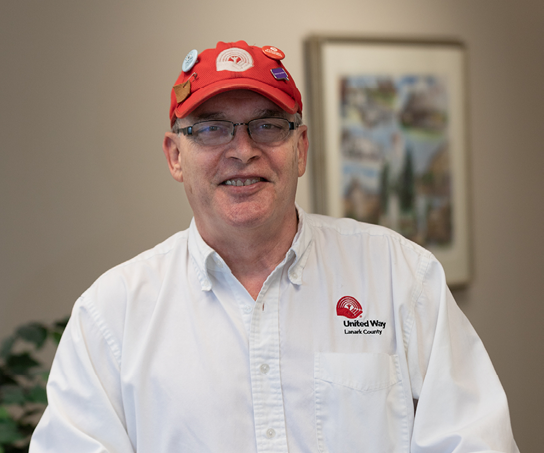
theHumm is reaching out to members of our Ottawa Valley community to ask how they are finding ways to use their gifts and skills in these challenging times. Today’s subject is Fraser Scantlebury, the outgoing Regional Director at United Way East Ontario — Lanark, and a long-time community volunteer. We contacted him to find out how he’s feeling about stepping down from the position that he has held so capably for the past 7 years (while being at United Way for a total of 9 years and 7 months).
theHumm: What have been some of the highlights from your time with United Way East Ontario?
That is always a difficult question to answer. Foremost for me has been the ability to work with so many wonderful, caring, and compassionate people in Lanark County & Smiths Falls. My time at United Way provided me the opportunity to learn about the passion and dedication of the volunteers, staff in non-profit organizations, municipal and county offices, along with private businesses in all nine communities that make up the area United Way serves. Working with all of these great people to ensure that United Way was able to bring the resources needed to have impact within our communities, to help those who were in need, was a real joy. In 2015, we started to move towards a Community Impact approach to our work, which took a lot of effort and a willingness of our community to join with us on the journey, and one we continue on today. In February 2019, we saw the fruits of those efforts when United Way released the report A Profile of Vulnerable Seniors in the United Counties of Prescott and Russell, Lanark County, and Renfrew County. This marked the first time that Ontario’s rural seniors, and particularly those who are vulnerable, were the focus of a specific study. The data in that report is helping our partners and those in the wider community who are serving this population to better identify the needs of our seniors, in a rural setting. Two very positive outgrowths of that seminal report were the establishment of the Successful Ageing Advisory Committee that now meets monthly to share ideas and discuss issues, along with the development of the Seniors Vulnerability Index. The other major highlight for me was the amalgamation of United Way Lanark County with the United Ways of Prescott-Russell, Ottawa, and Renfrew County into the United Way East Ontario, that I worked on since 2013 to its fruition in April of 2017. While there certainly have been bumps on the road, overall, the effort has been very successful. For example, the Seniors Report would not have been possible without the amalgamation. I am also very excited to have been part of the team working to bring Planet Youth Lanark County into being, to help our youth lead better lives, and our communities to be stronger. Finally, I want to thank the volunteer members of the United Way Advisory Council, led by the Chair Helen McIntosh, for their support – without that I could not have enjoyed the success I have during my time with the organization.
What fond memories of being an active volunteer in this community will you carry into retirement?
I have to come back to that theme of people. Whether at United Way or other volunteer opportunities I have participated in, such as Arts Fusion, Puppets Up, The Hunger Stop Foodbank, Valley Players, Celtfest, The Mudds, the Humm Productions, the Mills Community Support (now Carebridge), Rotary, and others (I know I have left some out!), over the years it has always about the people. It is the opportunity to work with great people, who really, really, care and want to make our communities a better, more tolerant place to live, that drives my wish to volunteer. At the end when you sit together after whatever the project or event was and see not only the look of exhaustion, but also that grin of excitement of a job well done, that means so much. You know, when you volunteer, you receive so much more back than you give. My parents taught me that lesson early on in life – I saw them volunteering and the joy it brought to them, and it instilled me to follow in their footpaths. Both my sister Kathy and I have always volunteered – and we will continue to do so in retirement. A final note - there is one volunteering role that always gave me incredible pleasure to do. And that was playing Nick the Mascot for Puppets Up for nearly 10 years. After the festival weekend was over, my whole face would be so sore from smiling – and those smiles came from all of the children – and adult children – who reacted to Nick in such a positive fashion. For me, it brought home the idea that you need to smile on the inside to smile on the outside!
We’ve heard that you’ll be handing over the reins to a very capable Interim Regional Director. Do you have any thoughts on the particular challenges and opportunities she will be facing at this time?
I’m excited to work with Jane Torrance when she assumes the Acting Regional Director position for the last 5 weeks of my time with United Way. I’ve worked with Jane on a variety of projects since my early days in Almonte, and I know she will bring a similar passion of caring to the United Way. With the advent of the COVID-19 Pandemic, the landscape has changed dramatically for the non-profit charity sector, and there will be many new issues to address within both our local communities and the wider country. United Way is looking to work with the community on finding out how to move forward, and I know Jane will bring her dedication to her new role and reach out and involve all of United Way’s partners and the wider community in moving towards a more just and caring society.
How can the wider community best support UWEO in their work right now?
As we move into the fall, many local non-profit organizations will be struggling with aftermath of the first wave of the pandemic – they lost various fund raising opportunities and revenue generating activities and had to work hard to make changes to continue their work in this new environment. In many cases that meant reducing staff and curtailing vital programs for those in need within our nine communities. The United Way is facing those same challenges as we look to see how to support essential programs for seniors, youth, and families. We know these are tough times for many – but if you are able to support the work of United Way through donations, we would sincerely appreciate that <www.unitedwayeo.ca/donate>. We remain 100% Local which means that you donation stay right here in Lanark County & Smiths Falls. And if you are not in position to make a financial commitment, then offer up your talents and volunteer within your community to lend a hand to those in need.
What are you personally most concerned about during these tough times?
There has been a lot of talk about returning to “normal” after the pandemics expected second wave – my hope is that we do not return to normal – that we seek to do better and learn from the experience we have all lived through. That we need to support those who are challenged in our society – the homeless, the single parent, our seniors, our front line workers who we counted on daily but rarely make enough to live on. We need to do better and look at new ways to bring society, our communities, to a better place. We need to strive for better health care for our seniors and improved wages for those who care for them. There has to be better support for people living in poverty, so maybe now it is the time to look at the idea of a universal basic income. Most important, we need to make sure that there is justice and respect for those in our communities – indigenous and people of colour – who suffer discrimination on an on-going basis. If we lose this moment, if we just got back to what was “normal” before, then we will have lost an opportunity to be better, to show the humanity in all of us.
What are you optimistic about in terms of what happens to our community during and after the pandemic?
I have seen so many wonderful displays of support during this time. From volunteers delivering meals and groceries to seniors to the support for our essential workers – in health care and in those everyday jobs that allowed us to continue to live – to the efforts of people looking for new ways to support those in need within our communities. People checking to make sure neighbours are doing okay and staff in many organizations striving to find new solutions to do their vital work – from supporting youth or seniors to reaching out to those suffering from mental health issues to doing a simple thing like calling someone. That is what makes me optimistic that our communities both locally and nationally have the ability to get through this pandemic, and build a better community for all.

Years ago I had a bright yellow snowsuit that I wore all winter. Yes, I looked like Big Bird, but everyone knew where to find me at our events. One summer day, I met someone who nearly passed me by, and then returned to say, “I didn’t recognize you with your clothes off”. I kid you not! When I retired the yellow suit, it was as like a stone in a pond: no one looked for me, no one found me, and we passed on our event duties to the next eager parent.
How do we recognize each other when we’re half covered in our ever-so-attractive masks? I always thought I looked for a person’s smile, but now I have to rely on other signs. If I’m behind the person, I recognize a particular gait, especially if there is a dog on a leash. Then I likely recognize the dog too, and when the person turns around, we can chat away like we always do. But do you notice that we all stand back from each other now, and never, never think about touching the arm of an acquaintance? Dogs still seem to be open to pats though.
I also recognize hair styles more than I used to. Don’t go getting a new “do” or changing your hair colour, as I might not know you. Ah, but I’d see your eyes, and I’d know it was you. Are you smiling behind your mask? If so, I’ll see it in your eyes. No dark glasses please, especially the aviator type, or I’ll think you’re on your way to rob a bank. Eyes have taken on new significance, along with a wrinkle of the forehead, a raised eyebrow. I think I’ll throw my loose change into mascara investments. Try this: stand in front of a mirror and make all sorts of emotional faces without using your mouth at all. It’s very hard to do, but we need to practice this as it becomes our new mode of expression.
Before long, we might start recognizing people by their particular masks. Some people prefer the medical look, the blue pleated number that gives a degree of anonymity, since these are available all over. However, some like the pleated patterned variety, a playful look to match every day. Quilters have finally found a valid use for a that mountainous stash of fabric, and they’re happy to be making masks in huge quantities. Kids want theirs with superhero patterns, and I say children wearing masks are indeed little superheroes. That can’t be easy, and they’re really trying to be responsible. Then we get to the designer fitted numbers, plain for guys who wouldn’t wear floral print even on a good day. Men like the camo look, or plaid if not too loud, but a solid colour indicates they’re doing their duty without fussing over fashion. Further, it’s got to be easy to get on: no fancy ties under the ball cap, just plain old elastics behind the ears and they’re done. They want to hang the darn thing on the rear-view mirror of the pickup, and only put it on when really necessary.
Women seem to be more adventuresome than men when it comes to pattern and colour. Several styles proliferate: pleated with no centre seam, fitted with darts, fitted with centre seams and carefully placed patterns. Every woman has her particular favourite, either of her own making or a specialty order. A little bling on a corner adds a special “je ne sais quoi”. Further, the merit of each design can be discussed for hours. I’m not to the stage of coordinating with my clothes, but I do save my dog design mask for class times. Company logos are appearing here and there, suggesting that marketing never stops. Soon we’ll see a mask and know who the wearer is simply by the design, the colour or the logo. Let’s hope we’ll look a little closer and see faces too though.
Voices always count, and even when we’re muttering through three layers of fabric, voices and laughs stand out. A cheery greeting at the farmers’ market, and we know right away who’s behind that pretty mask. However, I admit I’ve mistaken a couple of people. I hope they will forgive that I didn’t realize who they were, and ignore my answers which might have been vague. Lord help us if we’re going to need name tags!
If all else fails and we’re stumped when we see someone we ought to know, there’s nothing wrong with a muffled hello and wave as we pass. I’ll hope that I can pull all my resources together — a person’s particular walk, a voice, and bright happy eyes — to recognize people. Otherwise, we’ll all fall into anti-social behaviour, walking with heads down, no communication, no conversation, and definitely no hugging. That’s the worst of all this!
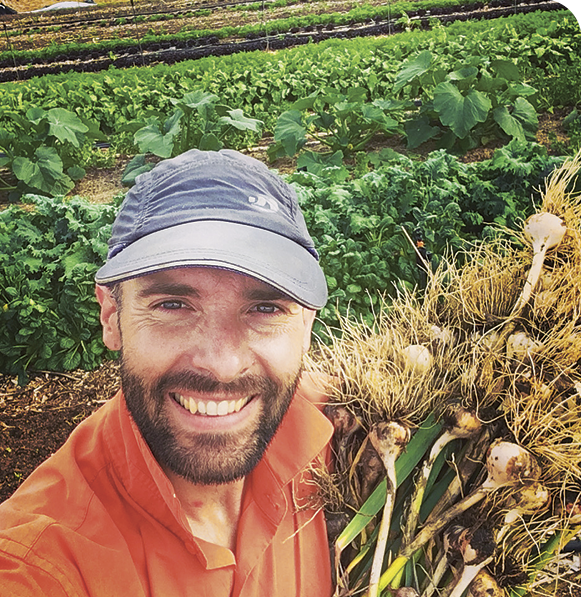
Twelve-hour days, six days a week outdoors in the hot sun, worrying about the lack of rain, lettuce going to flower and becoming bitter way too soon — all for remuneration way less than minimum wage. Yet Alberto Suarez professes to be living the dream, doing exactly what he wants to do as he puts his beliefs and values into each and every day. And I have to admit that I greatly admire what he is doing and the values that he is living.
Alberto and his partner Joanna have developed a small farm near Pakenham that they are calling “Nature’s Apprentice Farm” — a diversified, regenerative agricultural operation. Alberto and Joanna offer a salad subscription as well as vegetables on demand. Consumers can either reserve their salad share and pay for it in advance or order vegetables as they become available. Orders are then picked up at the farm or delivered. They have also been working with local businesses such as Mighty Fine Bakehouse in Arnprior, North Market and Dandelion Foods in Almonte, and The Good Food Company and Black Tartan Kitchen in Carleton Place. Alberto is responsible for the soil preparation, planting, weeding, watering, harvesting and delivering. Joanna is the farm’s communication and marketing advisor and helps in the field when she is not occupied with her full-time job.
Alberto is a very modest, soft-spoken man, but his enthusiasm is palpable when he talks about their farming venture. Their path to farming was not typical. Both are very highly educated — Alberto has three degrees in Biology and Ecology, Joanna two degrees in Biology. They spent five years in the Yukon working on biodiversity conservation. Alberto worked in academia for about ten years (half in Spain, half in Canada) before he decided to start farming. He continues to have one foot in the academic world as he teaches a course on “Ecosystem and Environmental Change” at Carleton University in the winter semester.
They are committed to helping biodiversity to thrive and have become convinced that modern industrial agriculture is a major contributor to both biodiversity loss (habitat loss and pollution) and climate change. Alberto believes “that in order for humans to have fulfilling and healthy lives, we need to grow food in a way that allows the creatures that share the land and waters with us to thrive alongside us, because it is not only the right thing to do, but also because we need them.” His goal is to go beyond sustainable and regenerate the land, for example by building fertility on-site through photosynthesis as opposed to constantly bringing in compost. He also plans to increase the diversity of both plants and animals over time.
The basic approach to growing is to nurture the soil by adding lots of organic matter, not disturbing the soil (no till, no dig, not even forking), keeping the soil covered either with the crop canopy or mulches or both, and not using any chemical whatsoever. Only hand tools are being used, and I can only wish that my gardens looked as neat and weed-free. Of the roughly seven acres currently rented, about two acres of grassland and three acres of forest are kept as reserves for wildlife.
For pest management, physical barriers (insect and row-covers) are used and hedgerows are being developed with birdhouses, bushes and flowers to create habitat for beneficial insects and birds. An electrified deer fence has also been installed.
As many gardeners have seen this year, water is a major concern. Alberto aims to build complementary systems and long-term resilience. Adding lots of organic matter and keeping the soil covered and using drip tape are essential to retaining water where it matters. They had a well drilled in the spring and are also planning on collecting rainwater and digging a pond in the fall as as a water reservoir and to create habitat for amphibians and other water-dependent animals.
While they currently focus on growing vegetables, the couple has no shortage of long-term visions. These include building a passive solar greenhouse to grow year-round, hosting farm-to-fork events in collaboration with local chefs, and creating a food forest using edible species of fruits, nuts and berries. Not surprisingly, they love giving farm tours and are considering the possibility to develop agritourism opportunities in the future.
They see an increasing interest in healthy eating and have received very positive feedback from visitors to the farm. Alberto is very happy to share his knowledge and experience with other gardeners and thinks that everyone should strive to grow as much food as they can. He concludes that if he ever goes out of business because everyone is growing their own food, he will happily do something else!
For more information on availability of produce or to arrange an informative farm tour, visit their gorgeous website <naturesapprenticefarm.ca>.
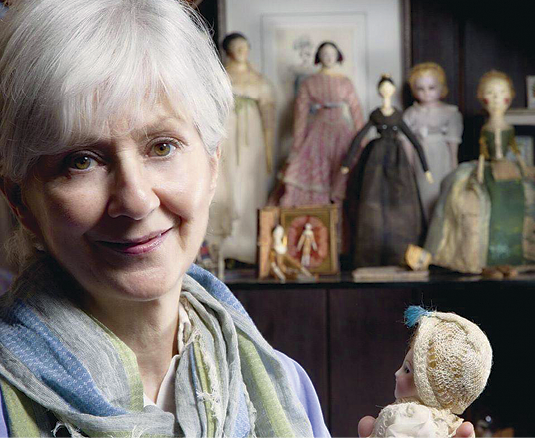
Art… and Soul
Re-gifting is frowned on in some circles, but when your gift is a talent for capturing the character, the strength and the internal beauty that people wear on their faces, sharing that gift becomes an act of kindness, empathy and generosity. When tragedy struck in March at Almonte Country Haven, a long-term care home with 82 residents, local portrait artist Lynn Melbourne used her talent to reach out to the devastated residents, their families and their caretakers.
The facility was among the earliest to experience a deadly assault by the COVID-19 virus. Long before management of the disease became better known, 28 of the residents had succumbed, leaving sorrow, fatigue and fear in its wake. According to staff, Melbourne‘s spontaneous offer to donate her original portraits of residents, both living and deceased, was met with sincere gratitude. Melbourne had no previous connection with the residence, and “the fact that she just reached out of compassion and kindness and concern – it was such a beautiful gesture.” <ottawa.ctvnews.ca/portraits-honour-former-residents-of-almonte-country-haven-1.4982843>.
Lynn had long been fascinated by people’s faces, and in a fortuitous quirk of fate she had begun to paint portraits of ACH residents even before the pandemic struck. Years ago, her own mother had been cared for in a similar facility, and Lynn had decided to pay tribute to her and to the courage and strength of people of all ages who share her circumstances. While searching Facebook for subjects for her portraits, she was struck by the happiness and kindness that she saw in the faces of residents and staff alike at ACH, and began her project.
As the COVID-19 crisis worsened, Melbourne’s work became intensely personal and emotional, and she doubled down to produce over forty portraits within two months. The results are indeed a tribute — to the people whose lives have ended or changed irrevocably, and to the human spirit that responds with kindness and generosity. Copies of the portraits are on exhibit at the Residence, and the facility’s owners have gifted prints on canvas to the families. When life returns to some kind of normal, ACH would like to host an Exhibit of the portraits. This would give the families and staff a chance to get together, meet Lynn, and possibly help provide some closure. Melbourne will then gift the original works created in pastels to the survivors and to the families of the deceased. Staff have reached out to Melbourne with gratitude, and she is now a treasured member of the extended family of ACH supporters.
Happenchance
It actually is a word, and it neatly explains the circuitous routes some of us travel throughout our lives. Like many of us, Lynn Melbourne did not follow a straight path to arrive at her current destination as a portrait artist. She attended the High School of Commerce Art Course, but her 26 years of working as a restoration artist for antique dealers in Ottawa was largely a fluke. She became intrigued when she met someone who was working in the field and decided to teach herself. After doing work for a few antique dealers, an interview by the Ottawa Citizen newspaper resulted in an article that generated an unexpected clamour of requests for her services. She set up a business to provide restoration services to collectors, dealers and museums that she only retired from three years ago.
Many of her restorations involved repairing the heads of antique dolls, and that led to her continuing fascination with faces. She describes herself now as “…a people person — I love seeing the beauty — the good and the strong — in people.” Just a note for clarification — at that time her name was Lynn Chambers; she has since reverted to her birth name of Lynn Melbourne. Her move to Almonte was also a bit of an “accident.” Ten years ago she and her partner went for a Sunday drive, ended up at the Thoburn Mill, and moved in shortly thereafter.
Facing Your Fears
So how did Lynn become a portrait artist? “For the longest time I thought it was too late to become an artist, but one day about five years ago I just decided better late than never.”
She took classes to learn how to use pastels, practiced life drawing, did a lot of practicing, started renting studio space with painter Mary Pfaff, rented a spot in the Almonte Post Office, and now has a space at Carriageway Studios at 65 Mill Street in Almonte. However, at press time she is just in the process of putting their Thoburn Mill apartment on the rental market as they move to their new home on Malcolm Street where her new studio will be located.
Her experience with the residents and staff at Almonte Country Haven profoundly affected her. The outpouring of gratitude and positive feedback has validated her intent to continue painting portraits, but she always wants to continue learning and trying new things. And she is contemplating another project that portrays people with dementia and other mental conditions to show the darker side of the human condition. Lynn does not take commissions at this time. At the moment, her works are only available online at the CTV link provided above (also provided on the back of her Artist Trading Card with her other coordinates). The late Alan Mirabelli took the lovely photograph of Lynn that appears on the front of her Trading Card. Usually I enjoy photographing our featured artists, but these are very unusual times.
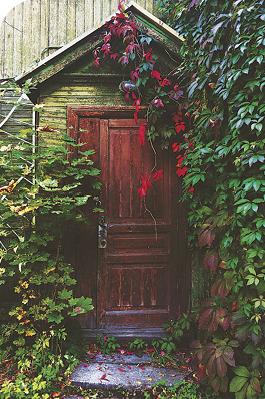
The Middleville and District Museum (located at 2130 Concession 6D in Middleville) will once again be welcoming visitors starting on Saturday, September 5. They’ll be open from 12–4pm that whole weekend, including Labour Day Monday. For the abbreviated 2020 season entry will be by voluntary donation, and the Museum will be open every Saturday, Sunday, and holiday Monday, or by appointment, through Thanksgiving weekend. Please note that masks will be mandatory in the museum; they will also be collecting visitor information for contact-tracing purposes as required by the Health Board.So with that out of the way, what’s new at the Museum?
Let’s start with this: previous Museum visitors are familiar with the outdoor “facilities” that have been available up to now. They will be happy to know that the Museum now boasts a modern accessible washroom (and please note, all surfaces will be sanitized after each use). The Museum was given a grant by the Trillium Foundation and the amount was seriously stretched by Mike Sobol (who acted as a volunteer project manager), by lots of people who scraped and hammered and painted, and by many more who contributed materials and supplies.
As for the Museum displays and programs, they are in the process of going “high-tech”. Everything may not be fine-tuned on the first weekend, but visitors will soon be able to see videos of old-timers telling stories of earlier days in Middleville, and to make use of recorded information about Museum displays. People will also be able to see the Museum’s extensive local family history archive in detailed digital format.
Of course, all the wonderful local history collections are available, though there will be signage reminding you that, due to COVID, exhibits are not to be touched. The displays include examples of domestic life in pioneer days, the development of local commerce, farm life, pre-modern medicine, community entertainment and the changing forms of transportation. All in all, a visit to the museum lets you imagine all the details of what day-to-day life was like for our ancestors.
They look forward to seeing you, and hope to be opening for a full season in May of 2021. For more information please visit <middlevillemuseum.org>, call 259–5462 or email <middlevillemuseum@gmail.com>.
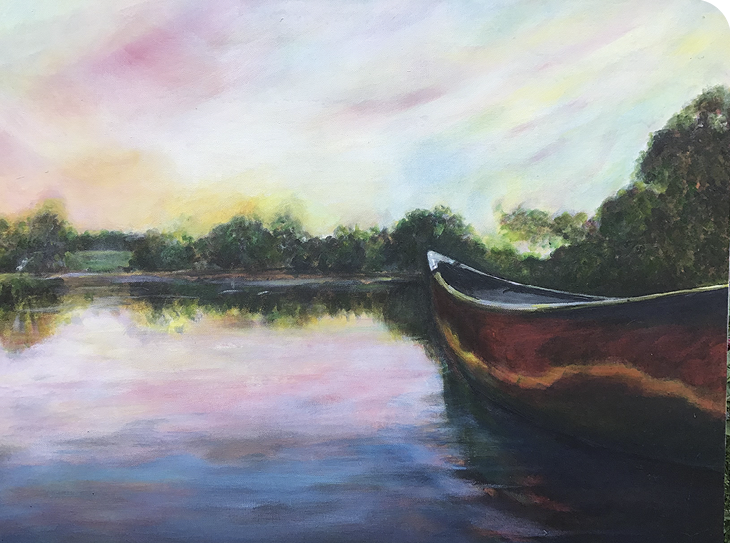
In our house, getting a new edition of theHumm at the beginning of every month is a treat. No matter what is going on, knowing that our community is full of amazing and creative people, events and projects is always an inspiration.
To add to this monthly feast for the mind and soul, the Lanark Climate Network will be sharing its activities to collaborate, advocate for and build a fairer, greener, sustainably prosperous Lanark.
Since the lockdown and other measures were put in place in response to the pandemic, we have seen very clearly how our previously “normal” ways of carrying on have been adversely affecting many aspects of our world — perhaps none worse than the effect on our most vulnerable citizens. The Climate Crisis quickly took a back seat to dealing with the pressing issues of COVID-19. However, the problems with our misuse of the natural world continued (despite the wonders of simple things like being able to hear bees buzzing in the garden and birds singing due to the of the lack of background noise from vehicles). Our community needs to get back to some kind of “normalcy”. So how can we all contribute to doing things better, greener?
Fortunately there are lots of great ideas from all sectors now being given the attention they deserve in terms of how we can proceed in a fairer, more empathetic way, while becoming even more prosperous; not “richer” or having a bigger GDP, but prosperous in a way that allows us time to be with our families, children and elders, time to plant gardens, cook nutritious local food, enjoy our gorgeous natural playgrounds and pursue our dreams.
The Lanark Climate Network has as its vision: an engaged community committed to building a low-carbon and resilient place to work and play, where the natural ecosystems on which ALL LIFE depends are valued and conserved for our grandkids and their grandkids. It’s worth noting here that last October the Network had already proposed to the Lanark Council that it institute a process to develop a Climate Action Plan for both tiers of local government — which was adopted unanimously! The Plan has its own budget and a dedicated staffer: great progress in this department!
This column will be full of great stories about the work being done in our county to make sure the New Normal takes into account all the aspects of green living in this great place and what we see to be inspiring and wonderful. There will be stories of people involved in energizing endeavours such as growing amazing organic food (enough even to share with food banks) and rejigging processing to help out (thanks for the hand sanitizer, Top Shelf and Dairy distilleries!). You’ll hear about people working to protect the interwoven parts of our ecosystem, folks who have worked for years in environmental advocacy, and those who have figured out how to adapt to new ways of doing things that are even more successful! We are excited to bring you these stories in the months to come in the hope that more of our neighbours will choose to live more lightly on the planet and engage with the local work being done when it doesn’t seem so daunting and confusing.
The Lanark Climate Network has a bunch of dedicated folks, in nine working groups, meeting to plan and implement practical local actions. The groups are: Composting/4Rs, Communications, Energy, Farms, Food, Forests, Health, Local Government and Transportation. Sue Brandum, one of the Network’s coordinators, noted: “I’m blown away by the skill, energy and commitment of the people who make up these working groups — put them all together and it’s dynamite.”
So check this column out each month for all news related to the work of the Lanark Climate Network: we are excited to share what we are doing and introduce you to some great people and ideas!
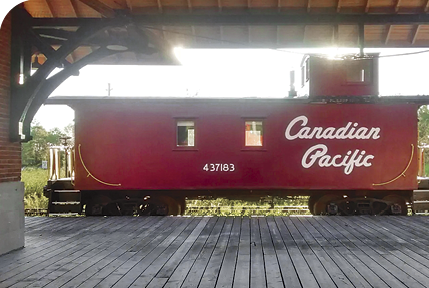
In one sense, this summer has reminded me a lot of the summers of my childhood — everybody wants to be outdoors. We’re all like kids again, darting out the door on the last day of school, whooping at the sunshine and gulping in the fresh air, itching to do something, anything, but be cooped up inside. Nearly everyone is camping or glamping or spending a week or a weekend at a cottage. Lots of folks are hitting the beaches and plunging into lakes. They’re walking and cycling, golfing and hiking and picnicking in the park. Staycationers have been busy gardening, barbecuing in their backyards; kids sleeping in tents for the night and swimming laps and laps and laps in their (or their neighbour’s) pools. The good news: officially, there are still three weeks of summer left!
Now be honest, when’s the last time you treated yourself to a truly delightful gourmet picnic? If your answer is “too long” or similar, well you’re in luck, as there’s still time to enjoy PICNIC Smiths Falls — a physical distancing “picnic in the park” experience with a wonderful twist.
The wonderful twist is that the delicious picnic meal is prepared for you by one of seven top-notch local restaurants. And the participating restaurants offer something absolutely delicious for almost anyone’s taste. Smoked meat sandwiches from Two Guys for Lunch; chicken Caesar wraps from Perfect Thyming; beer-battered fish ‘n’ chips from Boomtown. Harvest Social is serving up pesto chicken sandwiches, and Chuckles Jack offers butter chicken for two. How does a chimichurri steak sandwich from C’est Tout Bakery sound? Or The Pickled Pig’s classic sandwich for two with their famous broccoli salad? Meals range in price from $30 to $50. You can read the downloadable menu online at <smithsfalls.ca>. Fair warning: doing so will make you really, really hungry. It did me.
In Smiths Falls there are so many beautiful, peaceful spots to take your meal — beneath one of the many shady trees in Centennial Park, down by the beach at Murphy Park, or in the gazebo at Heritage House Museum. They have lots of grassy areas too, which might be just as romantic and restful. Explore. You’ll find the perfect backdrop in no time.
Each meal comes in a custom-printed box that includes a meal for two (two main dishes, two side dishes, two drinks and two desserts), a Smiths Falls Visitor Guide, a Smiths Falls Heritage Walking Tour guide, and free gifts from the Town and partners. Treat yourself or someone you love. Or maybe gift a lovely picnic meal to a good friend, or a teacher? Whatever you choose, enjoy. And as my dad would say: ignore the calories.
You might want to pair your picnic with Music by the Basin, live music every Friday in Centennial Park under the water tower. This series, hosted by The Pickled Pig, features afternoon and evening performances in the lovely park on the Rideau Canal by some genuinely wonderful local musicians. On September 4, Danielle Hewitt takes the matinée stage at 2pm, then Amber McLean plays in the evening. The following Friday features Ian & Chris in the afternoon, with Rob McLean and Rosalyn Dennett set to delight the evening audience. Finally, on September 18, The Doherty Brothers play at 2pm, and Tom Watson goes on at 7pm. Music by the Basin is free and it’s licensed, so kick off the weekend in style and enjoy a refreshing drink, great food served at The Pickled Pig, and some superb live music. Please note there is a 100-person maximum, and physical distancing is required.
There’s also lots of live music at Bowie’s in September. Their New Music Night series continues on September 11, featuring Abandon Eden and Robb Kerr. The following Friday Eddie Sayers will take the stage. Wrapping up the month is Elmsley on September 25. Suggested cover on New Music Nights is $5–$10, and the shows start at 10pm. On Sunday, September 20, as part of their Songwriter Concert Series, Bowie’s will host veteran Canadian folk and indie songwriter Pat Robitaille. This is his first show in Smiths Falls. For that show there is a table fee of $75 (for 3 to 6 people) or $10 for a Front Room ticket. The live music café is open inside at roughly half the capacity.
If you’re looking for a one-of-a-kind weekend late-summer getaway, you may wish to consider an overnight stay in a caboose. The Railway Museum of Eastern Ontario is offering a rare opportunity for folks to step back to the early railroading days and sleep in a caboose, just as railroaders did. You can book an overnight stay in one of two authentic cabooses — a 1940s red plywood CPR caboose, or an orange steel CNR caboose, circa 1967 — and “curl up in comfortable pull-down beds with fresh linens, settle back and relax in the quiet glow of the lantern.” I highly recommend visiting the Railway Museum’s website at <rmeo.org> to check out photos, even if you’re not planning on booking a stay.
If you’d like to book a stay, though, you can do so by visiting <Airbnb.ca> (just search for “Smiths Falls caboose.”) But do so well in advance. Folks have been super keen to enjoy this rare and joyful experience. Little wonder, too — what fun!
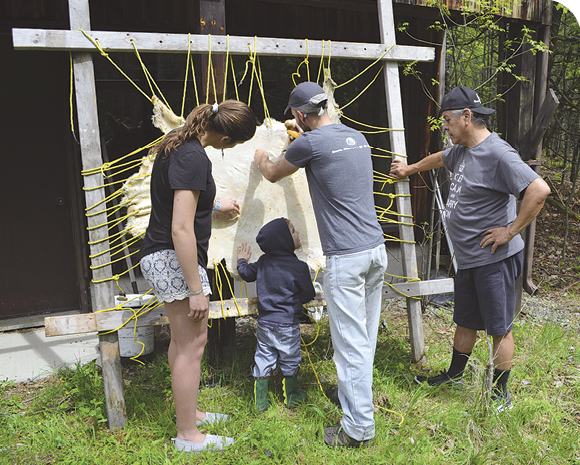
theHumm is reaching out to members of our Ottawa Valley community to ask how they are finding ways to use their gifts and skills in these challenging times. Today’s subject is Joanna Jack, Programs Manager at Plenty Canada, an Indigenous-led non-profit organization that facilitates access to and shares resources with Indigenous peoples and other community groups around the world in support of their environmental protection and sustainable development goals. We contacted her to find out about some fascinating projects that Plenty Canada is currently engaged in.
theHumm: In case some of our readers are hearing about Plenty Canada for the first time, could you give us a quick overview of the organization, and explain how it came to be located in Lanark County?
Joanna Jack: Plenty Canada has quietly been operating from its current location near Lanark, with Larry McDermott as its executive director, for more years than some might realize! While one of our more active areas of work these days is the development of a land-based learning centre and associated programming on the Algonquin protected lands where our office is located, our mandate is quite broad. To illustrate, Larry was involved with a response to the Guatemalan Earthquake in 1976, which was one of Plenty’s first projects, and now we’re once again working together with people in that region, supporting community and Indigenous-led emergency COVID-19 relief to help them get back on their feet.
Can you describe some of your programs that are specifically targeted at youth (both Indigenous and non-Indigenous)?
We’re currently offering a Truth and Reconciliation Training Program for Indigenous and non-Indigenous youth aged 15-30. This remarkable program, now in its second year, enables young people in this area to engage with inspiring knowledge-keepers, changemakers and artists while working together to make the positive change they too wish to see in the world. The program launches in mid-September and will run until the end of March next year. We will be providing a series of monthly online workshops as well as in-person events on the land, paired with opportunities for community engagement. The lineup includes workshops with Tim Johnson, executive producer of the feature documentary Rumble: The Indians Who Rocked the World; Jeff Beaver, a much-respected voice on manoomin (wild rice); Chuck Commanda, master birch bark canoe builder, and more!
The best thing of all is that we are able to offer such high-quality programming free of charge to our participants, thanks to funding from the Government of Canada through their Canada Service Corps program. Registration is now open and we are accepting applications online at <plentycanada.com>, where more details about the program can be found.
Why is it important to engage young people, and what do you hope that they take away from their involvement with Plenty Canada programs?
While we may only hear about a small number of young leaders in the news, like Autumn Peltier and Greta Thunberg, many young people are already quietly engaged in creating positive change in their communities. We hope to offer further inspiration, tools and trainings that will empower them to continue to engage, advocate and learn about both the land and our collective futures.
I understand that you will be hosting a “celebration of wild rice” on September 12. Can you tell us more about that, and about the significance of wild rice to this area?
Yes, our Manoomin (wild rice in Anishinaabemowin) Celebration will be held from 10am to 12pm on Saturday, September 12 at the Plenty Canada office near Lanark. If you have always been curious about wild rice, it is a great opportunity to learn about its significance both as a food and culturally. You will be able to witness how it is processed and learn about where and how it grows. The event will be held in mnoominii giizis (wild rice moon), which is when wild rice is harvested. Wild rice is a central aspect of the Anishinaabe migration story, as the nation was told to move west to the place where the food grows on the water. The grain is an important aspect of the traditional food systems in this area.
How can the community best support Plenty Canada in their work right now?
We are currently working on a number of projects and would love any support, whether it is volunteering, a financial contribution, or participating in our public programming. You can visit <plentycanada.com> or email us at <info@plentycanada.com>.
What are you personally most concerned about during these tough times?I am concerned for the health of our community here and globally during these isolating times. Now, more than ever, is such an important opportunity for reflection but also reconnection — to each other, to the land, and to the planet. In any given situation we have to choose how we will respond, and I hope that our choice will be to set our course towards a more kind, just and sustainable future.
What are you optimistic about in terms of Indigenous issues, environmental protection or sustainable development during and after the pandemic?
I am optimistic about the change that this disruption to our lives could catalyze. The pandemic is a symptom of a much deeper issue — the degradation of our natural world. This is a reality that’s been recognized by both western science, which I’m trained in, and Indigenous traditional knowledge, which I’ve been fortunate to be exposed to over the course of my work. COVID-19 is showing us that addressing the biodiversity and climate crisis is not a luxury. I’ve heard others suggest, and I believe, that this situation is offering humanity an opportunity to reflect and step up to the plate.
Above all, though, I’m inspired by our youth. Earlier this spring I was in a meeting with Alex Kay, one of our non-Indigenous participants of the Truth and Reconciliation program and a recent high school graduate. She referred to comments circulating online about humans being the virus of the earth, in response to noted improvements in water and air quality since March. I’ll never forget when she stated “I disagree. Let’s look at how Indigenous peoples have always taken care of this land. Ignorance is the virus of the earth, that we forget that we have this connection to it. I don’t think it’s fair at all to say that it’s humans when so many people have taken such good care of the earth for so many generations.” To hear that level of thinking from emerging young leaders as they begin to really engage with these issues helps fuel my optimism for the future.
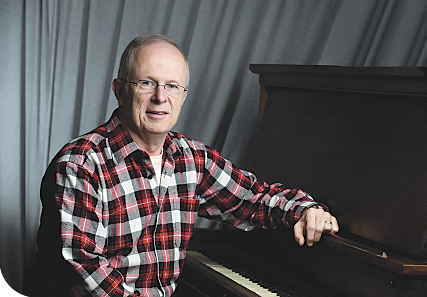
The pandemic has dealt a huge blow to artists and performers, cancelling gigs by the gazillion and making it difficult for people to teach art, theatre, music and movement. Fortunately, creators are, well, creative by nature, and many of them have been hard at work figuring out how to continue to keep students engaged and learning. Below, a few teachers and studios explain how they are doing just this in our area.
The Almonte Dance Company is committed to providing a fun, safe environment for staff, students and families! “In addition to our Screening Station and Checklist, we’ve arranged individual 6x6 physical distancing squares for dancers in each of our spacious studios. All registered dancers will receive Safety Guidelines that describe our protocols and ensure that families and staff adhere to the directive established by Leeds, Grenville and Lanark County District. Shorter terms with virtual mini-recitals will help you feel comfortable with your investment at our studio. We can’t wait to dance with you this season — register today to save your spot!”
The Almonte Potters Guild is happy to start their classes again in the week of September 21. There can only be 4 people in a class, and all students must wear masks and follow current COVID-19 protocols, including practicing social distancing when possible. There is also still room for a few studio potters. On Thanksgiving weekend there will be a sale on October 10 and 11 from 10–5 at the studio. The pottery sale will be held outdoors and inside. Luckily the Potters still have made some great pots!
At the Ottawa Children’s Theatre (OCT): “we give young people skills that last a lifetime. Now online, our programs are highly interactive, skill-based and fun! OCT LIVE Online 2020-2021 offers 25 different classes for ages 4–18 in Acting, Creative Drama, Musical Theatre, Improvisation, Designing for Theatre, and Writing. Our classes emphasize language arts, body awareness and creative thinking in a supportive environment with small class sizes. Our instructors are professional artists working with us from Ottawa, Toronto and New York City. With OCT LIVE Online, we’re only a time zone away.” <ottawachildrenstheatre.net>
At David Ivens Studio, face shields are the best solution for working in the studio. “I have six isolated workstations, and the studio is 1600 sq feet so there is plenty of space. There will be a supply of alcohol hand wipes for tools we have to share. I expect anyone coming to the studio to be aware and respect the health concerns of others. Book early, but let me know the day before if you have symptoms, a sore throat or fever — you can cancel and book another day with no penalty. Classes are every Saturday, so come healthy. Hope to see you soon!”
Peter Brown <peterbrown.ca> is now teaching jazz and blues piano online! “Like so many artists, all aspects of my music career were interrupted by the pandemic. Obviously teaching one-on-one piano lessons in peoples’ homes was no longer safe. Happily, though, I’ve found the transition to teaching online via Skype, Zoom or Facetime to be surprisingly easy. As long as I can see the student’s hands at the keyboard and as long as I have copies of whatever they’re working on, we can make just as much progress as we did in person. It does mean a little bit of effort sending music ahead of time, but it also eliminates travel time for the students and myself. While I do teach all styles of piano, my specialty has always been introducing “readers” (players who can only play from sheet music) to styles that generally depend on the ability to “play by ear”: jazz, blues, rock and country. So lessons are about knowing chords and chord patterns, internalizing the syncopated rhythms of these styles and adding fills and improvised solos. Even though there isn’t much written down, I find no more difficulty explaining and demonstrating concepts online than I did in person (it helps to have 40 years’ practice in explaining music theory!).”

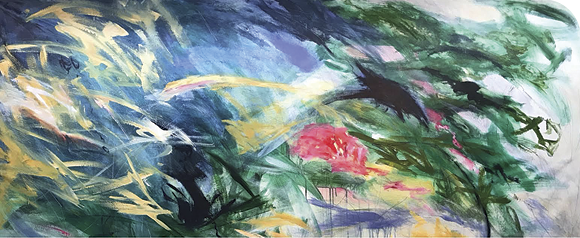
CHANNELS at Sivarulrasa Gallery
From September 2 to October 9, Sivarulrasa Gallery is pleased to present CHANNELS, featuring works by artists Deborah Arnold, Elaine Carr and Wendy Robertson. “Channels” suggests waterways or pathways; a transmission of frequencies or ideas; explorations of both inner and outer worlds. The exhibition can be viewed in person during regular gallery hours, Wednesdays to Sundays from 11am to 5pm.
Deborah Arnold creates evocative sculpture with chlorite, alabaster and other forms of stone. “I feel a fundamental connection to stone,” she says. “Stone has always been the starting point for my work. As a material it embodies strength and history while possessing an innate grace and power”. By incorporating steel or copper into the base of her works, she also combines her organic forms with references to our industrial culture.
Elaine Carr’s work examines geographic and topographic narratives of land and water as they interact with human lives. She builds up drawings and mixed media works, piecing together fragments from the present and the past, from historical and geographical data, collected photographs, cartography and memory. Her focus is on the Northern Hemisphere, with specific interest in the in the Great Lakes Basin and the Arctic.
Wendy Robertson’s work is inspired by the natural environment. Her gaze is often drawn to micro-environments with specific attention to negative spaces and the intricate interplay of colour and texture. Her paintings combine patterns in nature with techniques of abstraction to transform ordinary objects, such as a collection of rocks or pieces of tree bark, into immersive experiences for her viewers.
On Wednesday, September 9 from 7–8:30pm, Deborah Arnold, Elaine Carr and Wendy Robertson will join in live via Zoom to talk about their work and inspiration at an Artists’ Talk & Virtual Vernissage. You can join from the comfort of your home through a video link that can be accessed on your computer, tablet or smartphone. Please email the gallery at <info@sivarulrasa.com> and we will send you the link. For more information, visit <sivarulrasa.com>. The gallery is located at 34 Mill Street in Almonte.
Happy Anniversary, Strévé
Cheryl Straby, clothing designer and owner of the beautiful Strévé Design Gallery in Perth, will be holding a special Fashion Show on Sunday, September 13 at 2pm in her backyard… which just happens to be the beautiful Stewart Park! This show marks Cheryl’s 33 years in business, and corresponds with the opening of a new exhibit at Strévé by abstract artist Karen Goetzinger called Beauty in the Inconsequential.
The Fashion Show will be a mix of clothing from over the past 33 years, and will also feature Queen Bee Millinery as a special guest. Donations to The Table in Perth will be gratefully accepted. If the weather doesn’t cooperate on September 13, the rain date is Sunday, September 20 at 2pm. Beauty in the Inconsequential runs from September 10 to October 31.
The (Virtual) Perth Autumn Studio Tour
The 2020 Perth Autumn Studio Tour is going virtual and will begin on October 10.
Considering the current state of the world due to COVID-19, the members of this collective of local artists are adapting to these changing times and bringing the tour right into your living room. It will be a change from driving the country roads lit in their fall colours and having a delicious lunch at the Brooke Valley School, but your ability to browse and support local artists is easier than ever.
Franc Van Oort, Susie Osler, Dunn Sohn, Brent Kirkham, Anne Chambers, Rita Redner, Zoë Lianga, Catherine Orfald and Willa Murray are the members of this artist-run tour. You can reach them via <perthstudiotour.ca> and their personal websites as well as through social media.
This year the online-only tour will run from October 10 to 18, when many artists will be available by appointment for you to pick up online purchases. COVID-19 safety measures will be practised, and each artist will inform you of their policies when appointments are made.
While you are always welcome to browse each artist’s website before the launch date of October 10, the artists will be reserving pieces to release during the October 10–18 online studio tour.
You can expect the same notable quality of work you have seen in the past, with the modern ease of being able to shop from the comfort and safety of your home. In past years, many guest artists have been present on the tour, and there were many applications this year for both the established and emerging artist category. The decision was made however to run a pilot online tour with the hopes of being able to return to the physical tour next year.
This longstanding event is one-of-a-kind artist-run tour, which means that it really reflects the work of the people involved. It is a grassroots authentically artisanal tour featuring unique pieces sold by the artists. As the world continues to change, the artists have not stopped making and are excited to offer the tour in a new form. Stay tuned for more updates to come via their website, on Facebook and Instagram @perthstudiotour.
Artists Add Online Colour to Expressions of Art
Twenty-six local artists have been selected by an independent jury to participate in this year’s Expressions of Art Online Show and Sale hosted by the West Carleton Arts Society. Expressions of Art, which has been celebrated as a physical art show annually for more than 25 years, will be presented as an online show this year from October 9–31. The physical show was cancelled due to COVID concerns. A preview of the online show will be available mid-September. A new show website has been established at <wcasonlineshows.ca>.
“We have a wonderful cross-section of art in our online show this year,” says Ginny Fobert, chair of the show. “Our artists represent a variety of media, from oil, acrylic and watercolour, to photography and glass. It is a great representation of local and regional art, with styles that appeal to everyone.”
The three-member jury, independent of WCAS, reviewed all submissions and provided scoring results which determined entrance into the show.
“We are thrilled to welcome back some long-time favourites and are excited to add a number of newcomers to the show,” adds Fobert. Harpist Natalie Hoffmann is providing musical accompaniment.

How many of us know the history of the lands we inhabit? For settlers, do we know the stories of our ancestors’ arrival to these lands, and whose lives were embedded here prior to their arrival? Whose voices created the official historical record of this country that predominates? Whose voices have been silenced, ignored or not told? And how are our own personal histories interwoven with the colonization of these lands? Are we willing to actively engage with these questions? These are some of the themes featured in the thought-provoking short film Stories of Decolonization — Land Dispossession and Settlement.
At the end of July, the National Farmers Union (NFU) and the Lanark County Neighbours for Truth and Reconciliation (LCNTR) co-hosted a virtual screening and ensuing conversation about this timely film. With 256 registrants for this Zoom event, it has become clear there is a growing readiness to engage with the unsettling truths of settler history in Canada. Stories of Decolonization is a short but powerful documentary collaboratively produced by Liz Carlson, Sarah Story, Gladys Rowe and Teddy Zegeye-Gebrehiwot. The film weaves together the stories of a diverse group of Indigenous and non-Indigenous people — each grappling uniquely and personally with the injustice of historical and continued (illegal) appropriation of Indigenous land, settler privilege (their own, in some cases), the erasure of Indigenous experiences, histories and rights, and their efforts to do something about it.
It’s the ground we stand on… How do Canadians feel about living on someone else’s land? Well, we don’t like to think about it! — Murray Angus, Canadian activist, and co-founder of Nunavut Sivuniksavut
Dark truths can be hard to accept — perhaps in part because it makes it more difficult to forget, deny, or avoid doing something about it! But denial makes us complicit.
So…what to do?
This is one of the questions that Stories of Decolonization effectively asks us to consider. The 27-minute film was followed with a very engaged 90-minute Q&A session with a “virtual panel” that included several of the film’s creators and a few of the Indigenous and non-Indgenous “stars” featured in the film (Chickadee Richard, Steve Heinrichs and Monique Woroniak). There was a huge amount of interest from viewers who tuned into the Q&A in learning more about, and/or supporting, settler land return strategies and initiatives that are beginning to pop up across North America with more regularity — initiatives that include direct land return (i.e. a settler transferring property to a First Nation); support for Indigenous resurgence and struggles for jurisdiction over traditional territories (i.e. the Wet’suwet’en); and shared, or solely Indigenous, stewardship of land conservation and land trusts.
Though not yet commonplace nor straightforward, supporting such land reparation and return initiatives helps others recognize that confronting the problem and injustices of land dispossession, and the subsequent need to “normalize” the idea and practice of land return, are central to decolonization. It seems clear that we will witness a growing number of imaginative examples of this in the future.
If you have come to help me, you are wasting your time. But if you have come because your liberation is bound up with mine, then let us work together. — Aboriginal activists group, Queensland, 1970s
Instead of taking a divisive approach or providing pat, simple answers to the questions of its subject matter, Stories of Decolonization invites and inspires settlers to undertake the work of learning about both our personal histories within the context of colonization, and the actions or commitments we are ready to undertake within the framework of that knowledge. Truth-telling, though often challenging, has the ability to clear the air, to generate greater trust, and to initiate a transformative, creative and healing process both within ourselves and in the relationships we cultivate. This is an opportunity that is open to each of us to explore in our own ways.
Colonialism was, and is, a choice that Canadians make every day… It’s a choice to maintain and uphold a system that is based on the hyper-exploitation of the land and of Indigenous peoples… it is a choice to maintain a system that overwhelmingly promotes greed over creation. — Leanne Betasomasake Simpson, Michi Saagiig Nishnaabeg scholar, writer and artist
Visit <storiesofdecolonization.org> to watch the film and read more about the people involved. Listen to the online event/Q&A session at <youtube.com/watch?v=9YTy5DgjV_Q>. There is also an excellent curriculum guide that everyone (including teachers) will find very helpful in deepening into the questions posed by the film. It would work well as a discussion guide for a community screening of the film. You will also find links to numerous resources on some of the topics and historical contexts the film addresses.
Gratitude from the Lanark County Neighbours for Truth and Reconciliation <lanarkcountyneighbours.ca> to the NFU for cohosting with us — and especially to the filmmakers and panelists who generously contributed their time and candid remarks to the conversation following the screening.
Finally, participants at the event were asked to donate to the Ardoch Algonquin Culture Camp, supporting the transfer of knowledge from elders to youth. Please consider donating at <apagidiwag.org>.
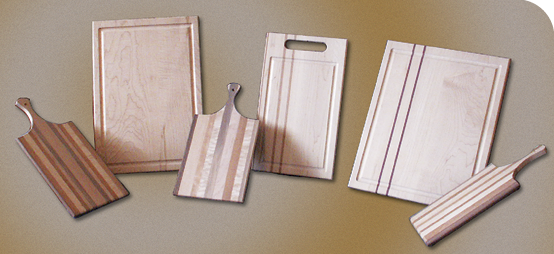
The Union Hall Community Centre, located at the intersection of Wolf Grove and Tatlock Roads, is a Registered Charity, owned and operated by the local community. Rentals of the hall and its exterior sign form the basis for our annual budget. Private donations and financial support from the Municipality of Mississippi Mills supplement this income.
Come and visit our booth at the Almonte Farmers’ Market on September 12 and 19, where we will be selling hand-crafted items made by Union Hall volunteers. Sewn items include one-of-a-kind yoga mat bags, tote bags, produce bags, cushions, place mats, aprons and tablecloths, all made from re-purposed materials. Also available are beautifully crafted wooden items, such as cutting boards artfully fashioned from of a variety of hardwoods. Because both the materials and the labour have been donated, 100% of the purchase price of these items goes directly to the Union Hall’s Renovation Fund.
We’re looking forward to seeing you at the Almonte Farmers’ Market between 8:30am and 12:30pm on September 12 and September 19, in the library parking lot. Strict COVID protocols will be in place. Cash or cheques will be accepted.
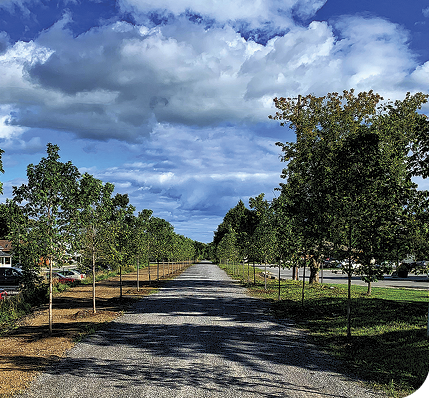
The Lanark County Warden typically hosts a fundraising event every year. In the past this has been a golf tournament during the month of August, but with COVID-19 and the gathering restrictions, Warden Brian Campbell wanted to change things up and host an outdoor family event to highlight the OVRT and all of the wonderful work that has been done to make it an accessible trail for everyone to use.
After discussions with Jeff Mills and Stephen Brathwaite, the concept of a “Slow Roll for United Way” was developed in conjunction with the official opening of the new Almonte Alameda. The Slow Roll will be a bike ride along the OVRT from the Almonte Alameda to Carleton Junction in Carleton Place on Saturday, September 12.
The day will start off with the registration and sign-in, followed by the opening of the Alameda at 10:30am. The ride will start at approximately 11am and end with a BBQ lunch at Carleton Junction. You can register to ride, donate, or sponsor a kilometre. Registration is $20 per rider (children 10 and under are free).
There will be a shuttle provided for those who don’t wish to ride their bikes back to Almonte.
Due to gathering restrictions, this event is limited to the first 100 paid registrants, and they will all receive swag bags and a BBQ lunch.
Organizers would love to hear from anyone interested in sponsoring or donating to the event. For more information, please visit <lanarkcounty.ca/-aboutlanark/newsmedia/wardenslowroll.htm>
All proceeds will be going to United Way East Ontario.
Almonte Alameda Official Opening
The “Almonte Alameda” will officially be opened on September 12 at 10:30am. The ceremony will include a ribbon cutting, congratulations to donors and volunteer, and an honouring of those for whom it is a memorial or recognition. Everyone is invited to attend — at a safe physical distance.
To date, over 170 individuals and eight businesses have donated to make this tree-lined section of the OVRT possible. 35 volunteers helped with the planting and watering of the beautiful maple trees. Two other municipalities have supported the project with donations, and the County has supplied backhoe time and some administration as well as the purchase of two trees in memory of previous mayors and County Councillors (John Levi and Shaun McLaughlin).
Five benches are on order from Branje Metalworks, and two bike racks have been ordered from Sports Systems Canada. There is room for one more bench, one additional bike rack and two picnic tables, so there’s still time to contribute! You can drop your cheques (made out to Lanark County) at Baker Bob’s or call 794–4816 for more information.

Do you want to move a library?
It’s big, and it’s coming up fast. We need your help to do it.
In October 2020 the Carleton Place Public Library will relocate to The Station Active Living Centre while the Beckwith Street location undergoes some much-needed interior renovations. Of the library’s 40,000-item collection, about 1500 items will be moved to the Station for circulation. The rest of the collection will be boxed up for safe storage.
In planning the move, our staff have learned some surprising things about the intricacies of moving a library:
Deciding which books should come to the temporary location and which should be packed for storage is part statistics, part knowing the reading habits of the community, and part unexpected internal struggle. (Yes, the Firefly graphic novel series is a personal favourite, but will the community need this in the next five months?).
There is a whole world of boxes and box-related information that was heretofore unknown to staff. Crush weight, lids or no lids, size, assembly time, and price; these are all decisions that have to be made before ordering boxes. Order boxes too small and it will double the work of loading and unloading, but too big and boxes can be too heavy for repeated lifting. Finally, where do all these boxes of books go until they can be returned to their newly renovated home?
Planning how to keep the collection in order during the move is harder than it sounds. Packing a library means planning for the day it is unpacked again. Reshelving materials happens alphabetically, and the last thing anyone wants to do is reach in and find a box of Bs when the Bs were unpacked and reshelved four hours ago. “Sorry everybody! We need to shift everything from B down to make room for this one box. Oops!”
Moving a library takes planning, organization, and a lot of help. Library staff are excited and game to take on the challenge, but they can’t do it alone. It’s going to take volunteers. A lot of them. It’s not every day a library has to pack and move its entire contents. It’s an event our community is going to remember for a long time. And we are going to need the community’s help to do it.
What’s Involved?
The Big Library Move will be a three-day community event. On the evening of Friday, October 2, the library will host a training night, where participants will learn exactly how to move a library.
Saturday and Sunday are move days. Volunteers will be making boxes, packing the collection, disassembling shelving and helping us take the collection over to the storage facility.
The library will be feeding our volunteers each day, and making sure everyone is having a great time.
What are the requirements for volunteers?
Volunteers will need to be 14 years of age and up. They will also need to be able to continuously lift boxes of up to 30 lbs. Volunteers will need to attend the Friday night briefing to assist on the weekend. Teams of two that are in each other’s social bubble are especially in need!
If you’re interested in helping out, please contact Caroline at <czeeman@carletonplace.ca> or 257–2702.

theHumm is reaching out to members of our Ottawa Valley community to ask how they are finding ways to use their gifts and skills in these challenging times. Today’s subject is Rachelle Elie — the world-travelling, award-winning comedian and Rag Bag Cabaret host who now calls Almonte home <crowningmonkey.com>. We contacted her to find out how she has been faring for the past few months, and how she plans to get people laughing again.
theHumm: First of all, how have you been faring since COVID hit? As a high-energy person, did you manage to find outlets for your creative talents during lockdown?
Rachelle Elie: Ha ha! It was a huge adjustment at first because I was so accustomed to being on stage 5–7 nights a week and suddenly I was home every night. The great thing was that I was forced to slow down my life and hang with my hubby & kids more. We got in some amazing quality family time. We worked thorough some big challenges as well, but I think we are closer from it.
I am a painter, so for the first few weeks I really threw myself into my art and that definitely filled the void for me. I have not made time to paint in a long time, so quarantine gave me an excuse to paint. It was also awesome because one of my sons got inspired to paint with me and now he is addicted to painting. I got to watch my 19-year-old son become an artist and that was amazing. My younger son taught himself how to weld and made a go-kart that works, so that was pretty mind boggling to watch! I did an online version of my one-woman show and that was great. About 70 people watched it in a Zoom room and I was surprised at how much fun it was. With that show I raised $500 for Lanark County Interval House and that felt good to do, especially during this tough time. I started up a mini-vlog with my husband called “the hot tub sessions” — it was so exciting to have a creative project with my hubby!
Humour and laughter are perhaps more important than ever when we are under stress, and yet people are still not able to attend the larger in-person shows and gatherings that we could in the past. I imagine it might be a while before it’s feasible to tour as well. How are you and other comedians trying to help fill the void during this time?
We have been in Stage 3 for three weeks and since then I have been on stage nine times — it has definitely lifted my spirits. From talking to other comedians, it seems like many are like me. I have been doing whatever I can do to stay positive despite not being able to do what I love. Most of us have been itching to get back on stage. Now that we are back it has been an adjustment to go from performing for hundreds of people to a maximum of fifty, but I am thrilled to be back in front of a live audience.
At many of your past shows you have donated a portion of your proceeds to the Canadian Association of Stand-Up Comedians. Why is it important to you to advocate for other performers?
In Canada, stand-up comedy is still a marginalized art form. It is baffling but it is still not recognized as an art form. Stand-up is such a challenging profession. The public and even funding organizations still do not fully understand how creative the craft is. Many assume it’s not work. You are either are funny or you’re not. They are ignorant of the skill, hard work and crafting that goes into the incredible process of sculpting a simple idea into a masterful joke. I knew most of the American stand-up comedy icons — George Carlin, Joan Rivers, Richard Prior — and yet when I discovered Canadian comic Mike MacDonald I had to do my research to find out who he was. Many people know do who he is, but he is not a household name in Canada like Jerry Seinfeld, Amy Schumer and Chris Rock are. As Sandra Battaglini, who heads the Canadian Association of Stand-up Comedians, said: “Canadian comics are at a disadvantage in their own country because Americans do not face the same bureaucratic red tape when they visit Canada for work… layers of structural problems throughout Canada’s comedy industry have resulted in many comics living on shoestring budgets.”
As Ontario progresses through Stage 3, what kinds of support would be helpful to performers — either from institutions like arts funders and health units or from your patrons and the community?
As a performer I seek support from my employers, which are comedy club owners. The thing I can wish for from them is that they still hire me and pay fairly for my work even though times are tough. As a producer what is helpful is for patrons and the community to attend shows! I would not want anyone to go out of they don’t feel comfortable, but please continue to support artists if you can. Most venues and producers are taking COVID precautions very seriously so that audiences and performers can feel safe.
What are you personally most concerned about at this time?
I am concerned about the performance arts and how we will survive. I have toured the fringe festivals for the last twenty-five years. Many friends rely on the income they get from seven months of touring to survive. It’s all shaken up now, for club and theatre owners as well. I’m not sure how arts organisations are going to survive this. With minimum capacities of 50 it is very hard to make a profit and pay bills. I also really worry about stand-up comedians because we still do not have access to government funding and grants.
What are you optimistic about in terms of what happens to comedy and live entertainment during and after the pandemic?
I am optimistic that audiences will slowly start feeling more comfortable going out and seeing shows. I was at Yuk Yuks with Derek Seguin and we sold out Saturday night, so that gave me optimism about the future of stand-up. I am optimistic that live entertainment will continue, but right now it’s still up in the air, and time will tell. I am excited to be giving it a go in Almonte this Friday night and I am thrilled that we are sold out!
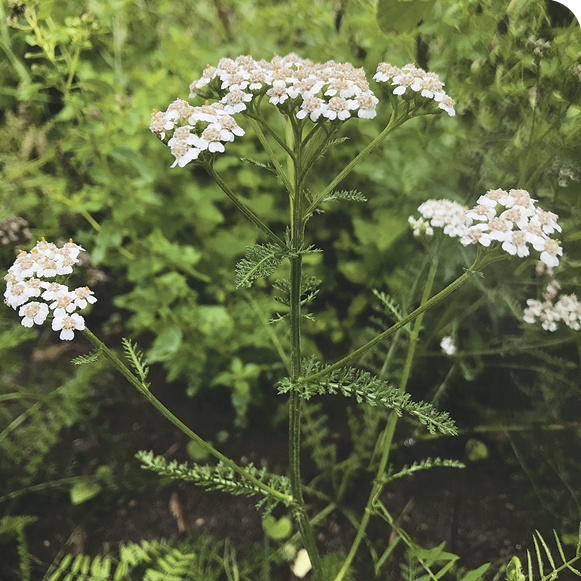
Our lawn for the first half of this summer, when temperatures were sizzling and rain was scarce at best, was left to its own devices — the mower forgotten in the barn for over a month. Without the weekly subjugation to the blade, the diversity of plant life in the lawn began to announce its presence. The wild plants able to thrive in droughty heat seized their opportunity, rising above the parched and browning grass.
Yarrow was, to my eyes, one of the most beautiful and prominent of these plants. Achillea millefolium — millefolium referring to her fine (thousand-leafed) foliage — is known also by numerous common names that shed light on some of the medicinal properties for which this plant has been known since antiquity. Herbal militaris, nosebleed plant, sanguinary, soldier’s woundwort, bloodwort, and thousand-seal — all point to Yarrow’s affinity for conditions of the blood, and an ability to staunch bleeding and heal wounds. Indeed, Achilles, Yarrow’s namesake, possessed great protective powers. Holding fast to his heel, as the story goes, Achilles’ mother Thetis dipped him into the River Styx to earn him his famed invincibility — at least until an arrow pierced his unprotected heel, his single vulnerability.
Greek myths aside, Yarrow is ubiquitous around the globe and has been widely used medicinally for healing internal and external wounds. In herbal parlance, Yarrow is primarily known as a vulnerary — something that brings about healing in wounds and inflammation (Latin: vulnis = wound). Yarrow is unusual in that it has contradictory but complementary properties — for its ability to clot and unclot the blood, for its fluid-generating and controlling ability, and for its cooling and warming effect on the body. According to acclaimed herbalist Matthew Wood, Yarrow is “Master of the Blood”. He says, “In order to treat disease we have to be able to decongest blood associated with inflammation, thin stagnant and congealed blood, tone the veins, stimulate the capillaries and arteries, and move the blood to or from the surface. Yarrow, the great ‘normalizer’ of the blood, does all these things.”
Some of Yarrow’s common uses (aside from wound healing) include its addition to skin tonics to ease inflammation, to tea to ease fever or promote perspiration, and in digestive aids to decongest the liver. Yarrow is also known as an “ally” to women in its reputed ability to stimulate or regulate menstrual flow and, in menopause, to help stabilize hot flashes, night sweats and agitation. On a more subtle level, there is an understanding amongst some practitioners that Yarrow flower essence is effective in the support and protection of our “psychic skin”, and can help to heal emotional “wounds” and emotional overwhelm, and assist in establishing healthy boundaries.
While I do not personally have experience of these more subtle claims, I find them fascinating to contemplate as part of a cumulative understanding of the plant. Disparate but somehow connected threads pulled from myth, ancient and contemporary herbal medicine, esoteric practices and my own personal sense of the plant make for an interwoven and richly layered appreciation of it. Somehow, it feels akin to the way the words of a poem coalesce to suggest meaning rather than explain it, and maintain a spaciousness where fresh insight can arise and shift.
All of this — including the idea of sitting with plants and “tuning in” to their energy — may seem like hocus-pocus to many people, yet there is much about the ways our bodies attune to the world to be curious about! Like Yarrow (and really all beings), our bodies are complex systems built for the exchange of energy that is life and which manifests in one form or another — from thoughts, to senses or emotions, to words and gestures, to invisible exchanges of subtle energetic pulses and particles that we don’t even register. Whether or not the insights gleaned from the time I spend with plants are “true” and measurable according to a rational understanding of the world really doesn’t matter much to me. What remains clear is that there are many ways of perceiving and interpreting the world we live in, and it only adds wonder to our lives to embrace the diversity of these perspectives with open curiosity.
Poetry, myth, old stories, languages and teachings from land-connected and Indigenous cultures suggest other, more interconnected, body-sensing ways of perception beyond the prevailing deductive — some would say “colonized” — understanding of our world. Just as stories may hold resonances and meaning that ring true to the aspects of one’s life at any given time, so too might plants themselves become their own sort of stories — offering us insights, personal to each of us, and dependent on the quality of attention and the experiences we bring to them.
Yarrow is a totem plant for me, and one who continues to capture my interest and imagination in mysterious ways. With a sturdy fibrous upright stem that supports her beautiful white (sometimes pink) umbel of florets, delicate feathery filaments of foliage, and a network of spreading roots that hold fast to the earth, to me she looks and feels like a conduit — conducting energy between the cosmos and the earth. There is no bling, no bells and whistles about her. She is straight up, sound, and steady, and I find myself, repeatedly, drawn into her humble yet concentrated magnetism. Yarrow is, to me, an Oak of a plant — a wise and patient elder, a monk deep in meditation, a pulsing and receptive beacon, quietly inviting, and awaiting, my attentiveness.